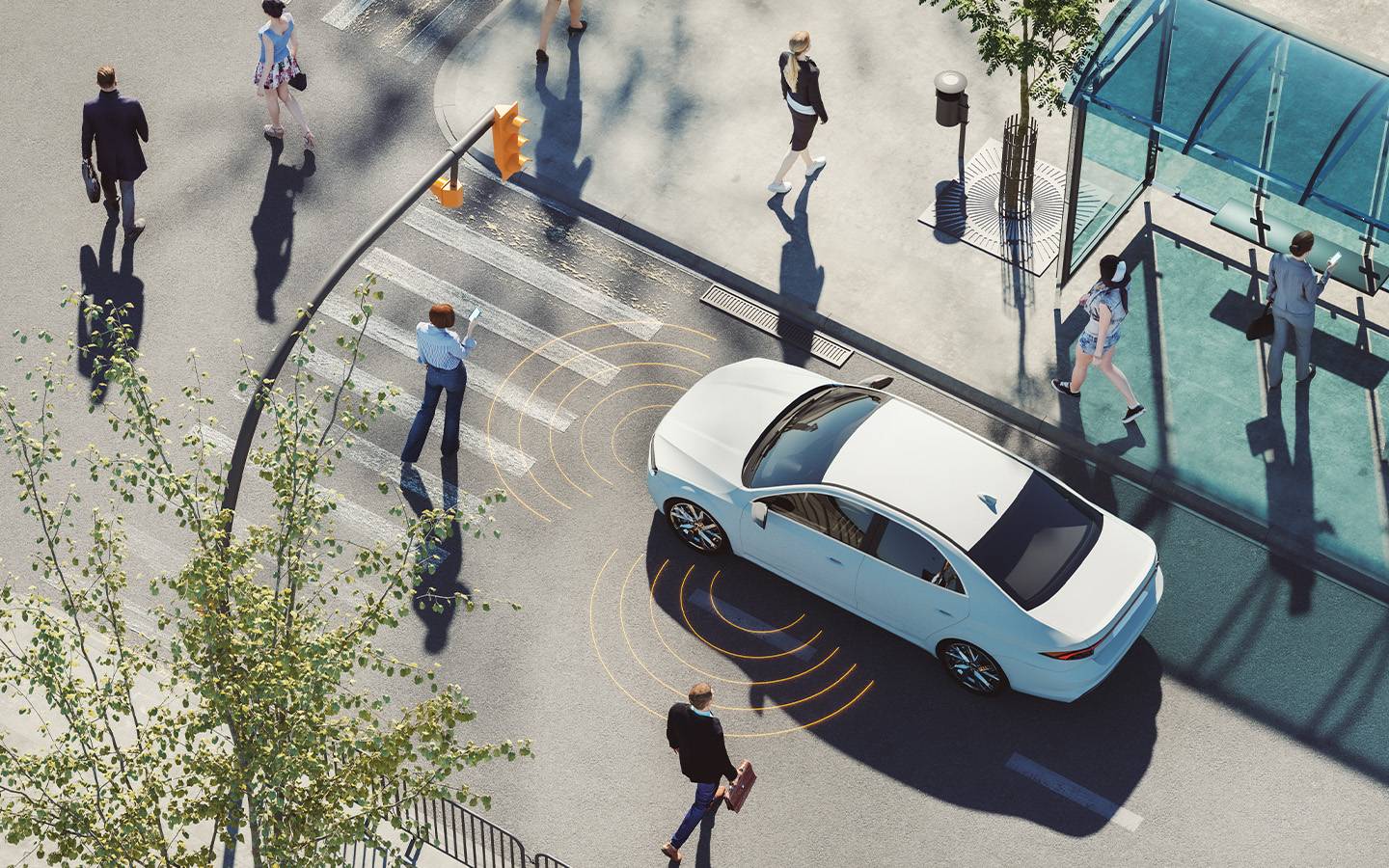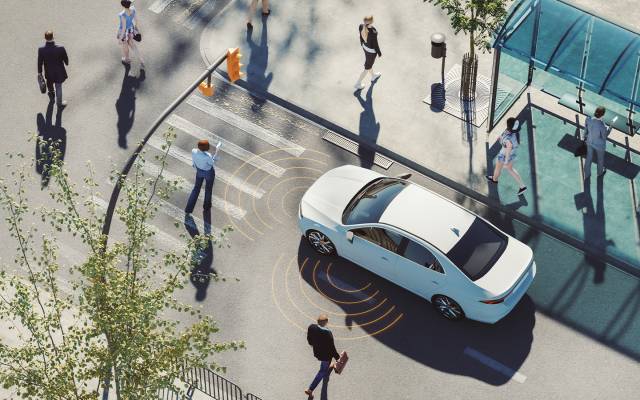Cities and towns worldwide are rapidly adopting Internet of Things (IoT) technology for a variety of applications, including traffic signals, trash management, and public security.
As each individual device generates its own data to be exchanged with and used by other devices and technologies, the importance of data aggregation for smart city IoT is rapidly increasing. Effective data aggregation will require cities to invest in data storage and security solutions for organizing and managing this massive amount of IoT data.
Find out how smart cities can properly implement IoT and data aggregation capabilities to realize a vision of urban living built on efficiency and sustainability.
The Role of the Internet of Things in Urban Development
Cities across the globe are experiencing rapid population growth that shows no signs of slowing down. By the year 2030, as much as 60% of the global population is expected to live in urban areas.
Without the right urban infrastructure, these growing populations can cause significant growing pains for a city. IoT devices have been identified as versatile tools with endless use cases for cities managing large communities at scale. But endpoint devices are only one component of a larger IoT infrastructure necessary for smart city development.
Wireless Sensor Networks and Devices Collecting Real-time Data
Sensors and other IoT devices are the connective tissue between smart cities and their residents. The data collected from monitoring conditions can be used by a wide range of public services.
These devices include city-owned technology, such as traffic lights and utilities infrastructure, and personal devices owned by citizens and guests who have opted into data sharing with the city.
Edge Computing and Cloud Platforms for Data Processing and Storage
As IoT devices collect and share data in real time, smart cities need processing and storage solutions that are readily available to this new data.
Edge computing and cloud platforms enable cities to process data closer to the data sources themselves, reducing latency and allowing faster, more efficient actions based on these IoT-derived insights.
Integration with Existing Infrastructure and Databases
As smart cities incorporate new IoT devices into their network, this technology needs to integrate with your existing IT infrastructure to support seamless data sharing and aggregation between various devices and databases.
To guarantee smooth integration and optimized performance of smart cities, IT architects must determine which IoT devices, cloud platforms, and other infrastructures best support the various requirements.
Data Storage Solutions Capable of Collecting and Processing Data
As cities put IoT technology to work in their communities, upgrades to data storage solutions may be necessary. Existing data centers may not offer the storage capacity required to support IoT at scale, and those data storage solutions may be outdated and ill-equipped to meet smart city performance requirements.
On-premises data storage can be upgraded with new storage hardware to increase capacity and performance while maintaining the security and availability benefits of physical, local storage. Cloud storage offers flexible, scalable infrastructure without the maintenance requirements of physical storage.
Hybrid cloud solutions combine the benefits of private and public cloud storage to improve resource utilization, increase computing power, and reduce security and compliance risks. These storage options could help upgrade your smart city IT infrastructure.
Transforming Infrastructure and Resource Management
When equipped with IoT technology, data-rich activities like city utilities and other important services can attain new levels of efficiency and optimization. Here are some of the top ways data aggregation can transform these services:
Monitoring and Optimizing Energy Consumption
Smart meters and other IoT sensors can be attached to individual houses, commercial buildings, and other city properties to build a smart energy grid that supports real-time monitoring of energy consumption.
The same IoT capabilities can benefit other publicly managed utilities, such as water services. Utility companies can use big data to optimize energy flow and ultimately improve energy efficiency in the city—lowering utility bills for individual addresses while alleviating stress on the energy grid.
Efficient Waste Management
Smart waste bins and other IoT devices can monitor trash levels and recommend more efficient waste management operations. From waste management service frequency to waste collection routes, this data can lower waste management costs and reduce related traffic congestion.
Improving Traffic and Public Transit
Traffic congestion is one of the greatest strains on urban infrastructure, generating tens of millions of hours of accumulated delays for residents and visitors to the United States’ largest cities.
Increased congestion results in higher pollution emissions while reducing roadway safety and overall quality of living in those cities. IoT devices offer a path to improve urban traffic management and public transit services.
Traffic Flow Optimization Through Real-Time Data Analysis
Geolocation data and mobile IoT devices can integrate with traffic management solutions to support real-time analysis and changes to traffic flow.
Alternate route recommendations, along with integrated management of traffic signal systems and other traffic management tools, can alleviate and proactively address this congestion.
Smart Parking Solutions
Smart parking systems in major global cities are using wireless sensor networks to alert drivers to available parking spaces in areas where limited parking options contribute to traffic congestion. By reducing congestion, these systems are also lowering traffic-related emissions and improving roadway safety.
Public Transportation and Route Optimization
IoT sensors and geolocation tracking can help transit users plan trips featuring more efficient routes. Sensors attached to buses and other vehicles can offer real-time updates on when passengers can expect to be picked up at their stop. This up-to-the-minute information can also help travelers plan trips based on emerging traffic congestion and transit service disruptions.
Public Safety and Emergency Response
Fast-growing urban areas are facing constant challenges in scaling security, policing, and public safety infrastructure to meet their day-to-day needs. The potential disruption of a citywide emergency further underscores the need for IoT-orchestrated public safety services.
IoT Data for Predictive Policing
While the use of IoT and predictive tools in policing raises ethical and legal considerations that cities must address, the data from these devices can be analyzed by predictive algorithms to anticipate and address criminal activity before it strikes. To facilitate a better response, police resources can be transferred to high-need locations.
Disaster Preparedness and Response
Geolocation, utility monitoring, public transit monitoring, and other forms of IoT tracking can become indispensable tools when responding to emergency situations. Smart cities can leverage this IoT data to prepare and practice disaster response plans for severe weather, public safety emergencies, and other disaster events.
Healthcare and Environmental Monitoring
Public health and city-wide healthcare initiatives can benefit from enhanced outreach, disease management and prevention, and healthcare outcomes for their citizens and visitors.
Air quality monitoring devices can alert residents to dangerous air pollution, encouraging people to limit their time outside. Disease response and prevention can use geolocation and other mobile technology to track and contain contact between infectious individuals and other citizens. IoT can also be used to improve communication, accessibility, and personalized treatment plans for individuals, eliminating traditional barriers to receiving healthcare services.
Considerations and Solutions to Scale Up IoT Data Aggregation
- Protecting Citizen Privacy. Certain use cases of smart city IoT devices present first-of-its-kind questions about the legal and ethical implications of IoT data collection and storage. Data privacy and compliance regulations must be considered when setting up and securing IoT infrastructure. This includes placing processes in place to gather consent and allow people to opt-out. Improved transparency into how data is used and stored will also be critical to maximize citizen participation in voluntary data-sharing.
- Data Standards and Interoperability. Many different technology integrations, such as data sharing with electronic health records and third-party traffic solutions, will require the implementation of data standards to support interoperability between different systems.
- Storage Capacity for Data Aggregation. As the collection and use of big data become more widespread, cities will need to expand and upgrade their storage capacity and data center capabilities to support data aggregation and processing at scale.
Partner with Seagate for Your Smart City Data Storage Needs
Smart cities face complex data storage needs that may not be sufficiently met by a single data center. In many cases, the smartest smart city storage solution is tailored to that city’s needs and combines on-premises data and cloud-based storage.
No matter how your city wants to design its data storage infrastructure, Seagate hardware and cloud-based storage solutions can be seamlessly integrated into a custom storage solution that’s flexible for your needs and scalable to your volume of data aggregation. Seagate Exos X, Exos AP, and Exos CORVAULT are designed for enterprise use and can be configured to your most complex and expansive data storage needs.
Likewise, our Lyve Cloud Solution can empower smart cities with multicloud and hybrid cloud storage that eliminates data silos and accelerates data processing and storage performance. As your city expands its IoT deployment, a tailored data storage solution of cloud-based and on-premises storage will give your city complete control over its network—along with the ability to grow and innovate over time.
Learn more about how Seagate can build the exact data storage solution for your smart city needs. Talk to a Seagate expert today.












